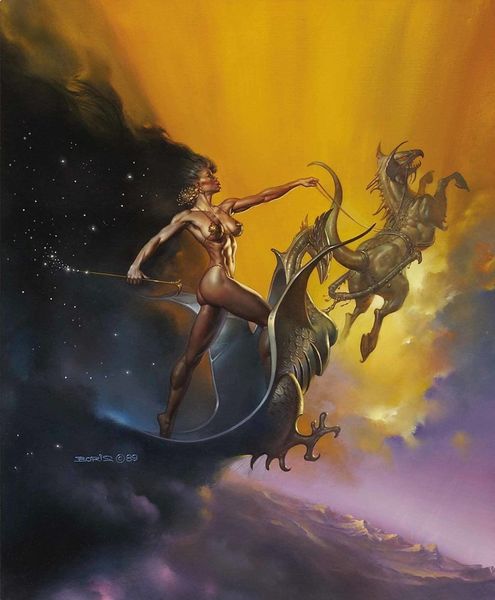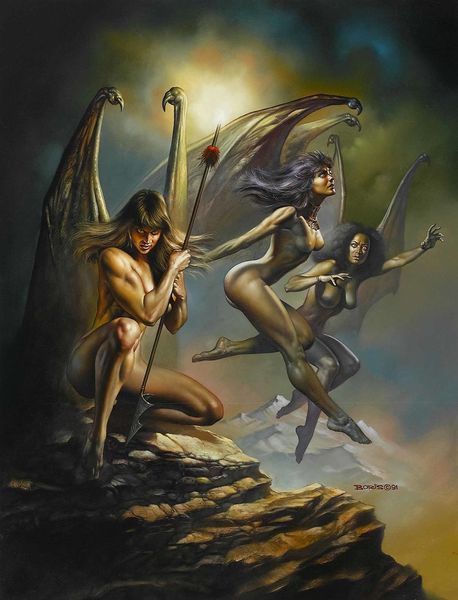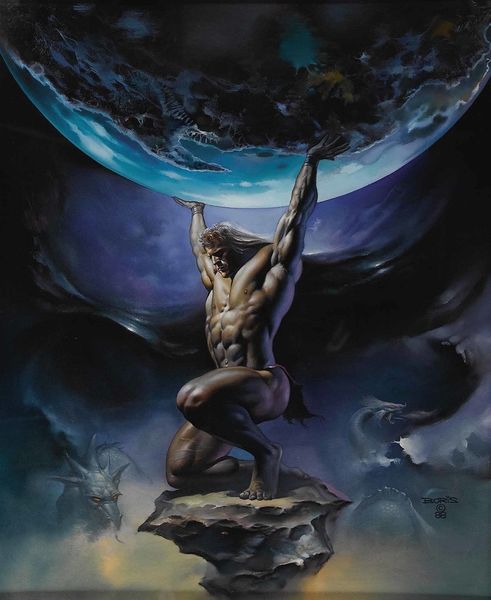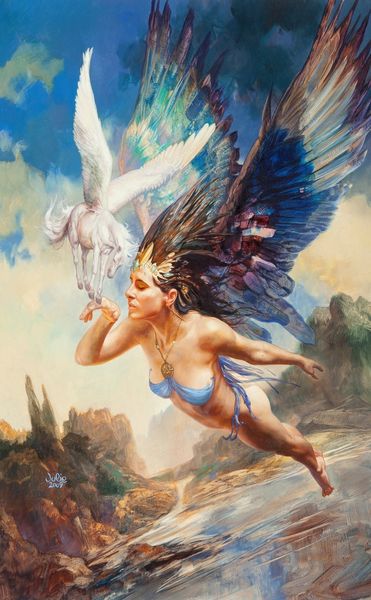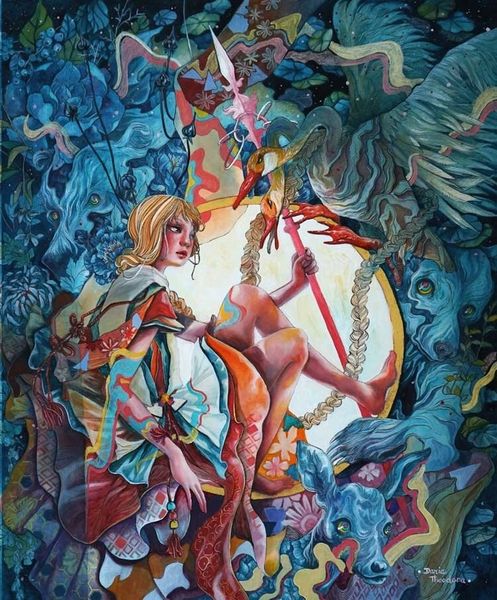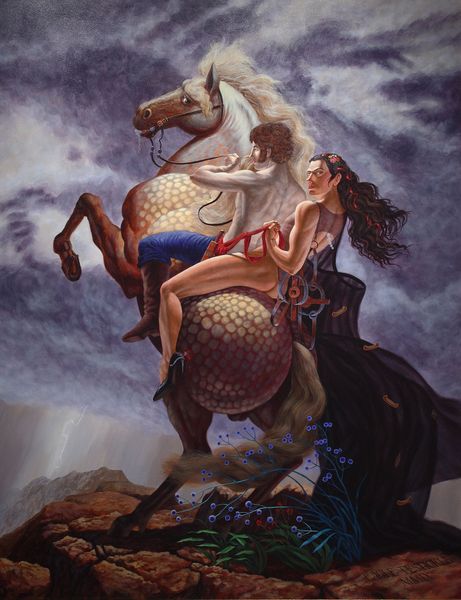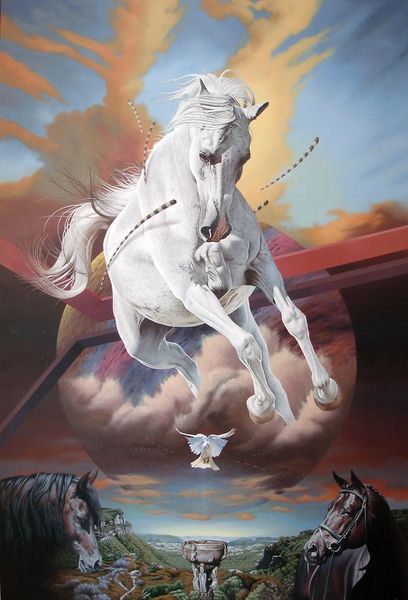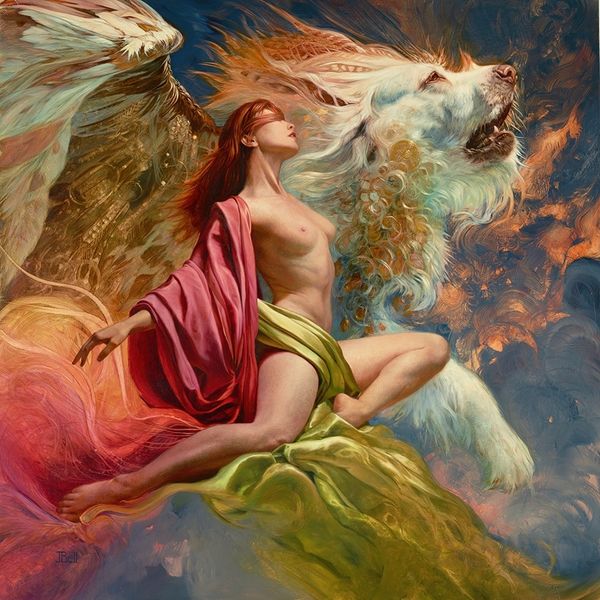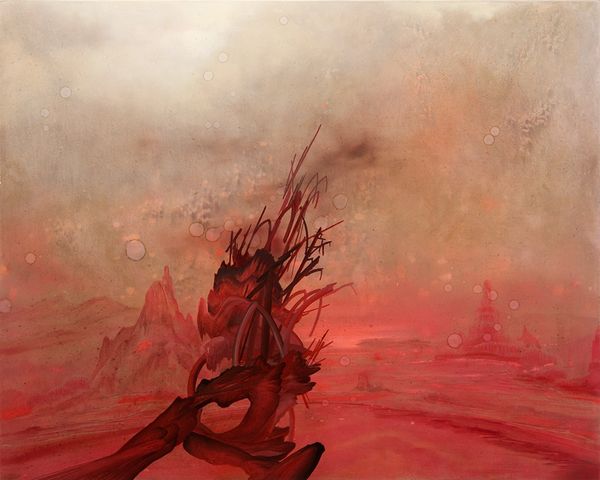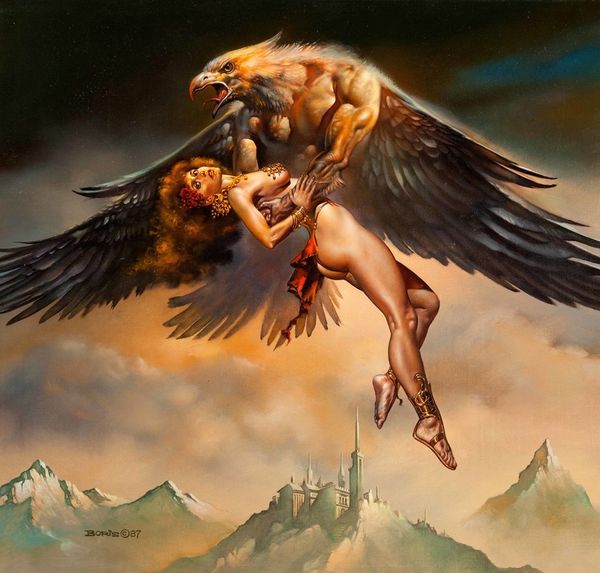
painting, acrylic-paint
#
sci-fi
#
fantasy art
#
painting
#
fantasy illustration
#
fantasy-art
#
acrylic-paint
#
geometric
Copyright: Modern Artists: Artvee
Editor: Here we have Boris Vallejo’s acrylic painting ‘Big Bang’ Spaceship and Asteroid from 1983. It has such a strong sense of forward motion; the geometric forms of the spacecraft contrasted against that nebula creates a dynamic scene. What strikes you when you look at this piece? Curator: I’m immediately drawn to the composition, specifically the convergence of lines. Note how the implied lines of the asteroid and spacecraft point towards a vanishing point beyond the frame, enhancing that forward motion you observed. What about the artist’s choice of acrylic, and his technique? Editor: Good point, the sharp edges of the ship suggest a crisp medium. But there’s also a softness, in the gradations of the rocket exhaust, that makes me wonder about the painting technique. Was it common to mix hard-edged and soft styles like this? Curator: Quite astute. Look closely at the chromatic relationships. The stark contrast between the cool tones of the spaceship and the warmer hues of the engine thrust create visual tension, thus directing the viewer’s gaze. Notice also how the white plume obscures much of the details, giving focus to a central, and rather dramatic, vanishing point. Editor: So it’s less about representing some external reality, and more about how the artist manipulates these elements of color and form? Curator: Precisely. While many interpret these pieces as fantastical, our investigation here demonstrates that the aesthetic power of "Big Bang" relies heavily on formal relationships to guide the viewer. Editor: I see how breaking down those formal elements enriches our understanding. It gives us a deeper language for decoding it. Curator: Indeed, and I appreciate your sharp eye. It allows us to delve deeper into its inherent qualities and appreciate it anew.
Comments
No comments
Be the first to comment and join the conversation on the ultimate creative platform.
